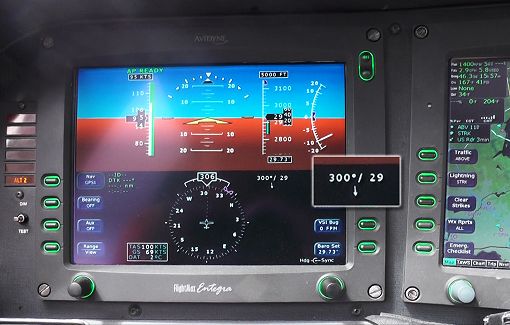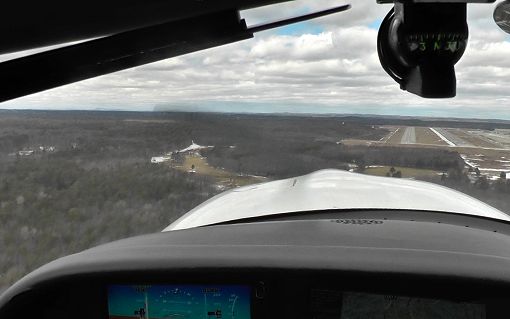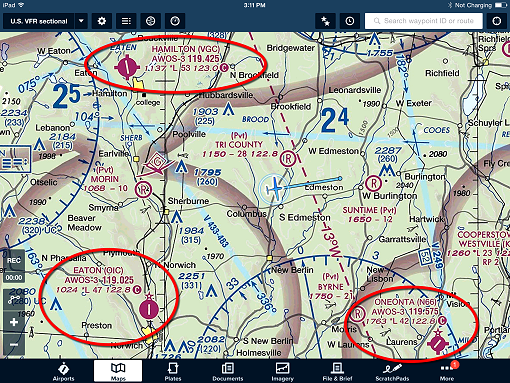Have a Speed-to-Fly for Emergencies in IMC
One thing that’s universally true of my aviation mentors was their persistent pursuit of refinement. They strove to improve a technique here, apply a concept more skillfully there, and generally understand the craft of aviation as deeply as they could. They also all had stories where said knowledge saved their bacon.
Best Glide Isn’t Published
One refinement that rarely gets taught is adjusting best glide speed (Vbg) for changes in weight and wind. I was never taught it, and therefore never passed it on to others, until I added on a glider rating. In a glider, if you’re heading back to the airport with a headwind, you can’t just open the throttle to make up for lost groundspeed. Instead, you pitch down to speed up. A lot. In fact, you might add 20 knots to your best glide (L/Dmax) speed to counter a 20-knot headwind.

Without going into too much math, think about it this way. If your best glide speed was 65 knots and you were pointed into a 65-knot wind, you’d have zero speed over the ground. You’d be descending vertically. Pitch down for 95 knots and you’re losing altitude much faster, but you’re at least moving forward by 30 knots, so you’re increasing your glide range. It’s obviously not as good as your glide range with no wind, but it’s better than just holding 65 knots.
Glider pilots get published data that tells them how much to change speed for a given amount of headwind (as well as tailwinds, rising air, and sinking air). Without such data, the quick estimator for most fixed-wing aircraft is to add at least half the headwind component to your best glide speed to get the best glide range over the ground into the wind.
Curious about how much this would hurt sink rates, a friend and I went out in his airplane and did a bunch of engine-idle descents at speeds from Vbg – 10 knots to Vbg + 30 knots. This data is just one sample, but we found the hit to sink rate was minimal up to 20 knots over best glide. Yes, we were sinking faster, but the variation in rate just due to minor pitch changes in holding airspeed were greater than the overall effect of a faster speed. The takeaway: If you have to glide into a wind in a GA airplane pitch down and go faster.
You can really see this effect doing power-idle glides to a runway into a wind. It’s kinda shocking with a strong wind. Try it.
While this sounds like a VFR skill, here’s the point for our IFR flying. It’s easy to say that if we lost the (only) engine in IMC, we punch up a nearest airport and glide there. But we don’t think too much about the how. The act of simply adding about half the headwind component to your best glide speed could make the difference between reaching that airport or not, especially if you’re up high and have to glide a long way. Pitching down at the bitter end if you’re not going to make the runway might get you enough forward progress that you do make the runway.
While we’re tweaking numbers, remember that Vbg is published for gross weight. It’s lower if you’re lighter. This change is small, but not zero. The actual formula is to reduce the airspeed by a factor of SQRT (CurrentWeight / GrossWeight). This works out to about a 1.5 percent reduction per each 100 pounds under gross weight for aircraft with gross weights of 1600-4500 pounds.
You might wonder if slowing down below Vbg with a tailwind will also increase range. Yes, but it’s probably not worth it. Slower than Vbg, many aircraft get more difficult to hold on speed. Also, you never want to go slower than minimum sink, which is about 75-percent of Vbg (corrected for your weight). That’s often less than a 20-knot window in piston singles.
All of this adjustment should happen after more critical items, like turning to the emergency airport, slowing to at least the Vbg you’ve studied and memorized, telling ATC, and trying to restart the engine. If you don’t have time for more than that, then adjusting your best glide probably won’t matter. However, if you have a long way to go and time to do it, adjustment could make all the difference.
Watch This Video:
“Direct to” Tips For Your GPS
Stopping the Prop
Glide tables in the POH are published for a windmilling propeller, which creates a lot of drag. Wouldn’t it be better to just stop the prop? Sure. In fact, you might extend your glide by ten percent or more. Except it’s not that simple.

First of all, you want the prop windmilling while you try to restart the engine. Otherwise, you’d have to crank it with the starter. Even if you were certain the engine will never restart—“Hey Bob, is the piston supposed to hang outside the cowling like that?”—it’s not easy to stop a windmilling prop in flight.
Getting airflow slow enough to stop the prop often requires flirting with stall speed, and even that might not do it. This isn’t what you want unless you have a long way to glide and will make up lost altitude from such low speed (or a stall recovery). If you have a constant-speed prop that doesn’t automatically feather, however, pulling it to a coarse pitch is usually free distance. Do it.
ForeFlight Question of the Month:
If you had to quickly divert to a nearby airport, how many of the following techniques would show you distance, bearing, and time to that airport at your current groundspeed? (Select all that apply)

A. The nearest airport field on the HUD (attitude display)
B. The nearest airport field on the moving map (if shown)
C. A two-finger distance measure performed on the moving map
D. From your flight plan after activating a direct-to that airport

